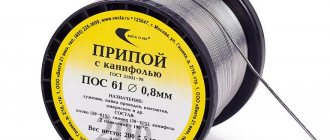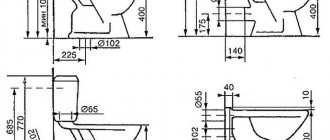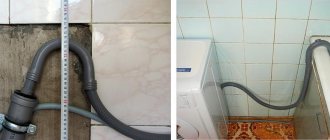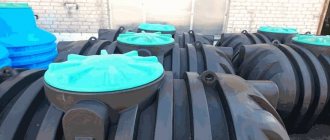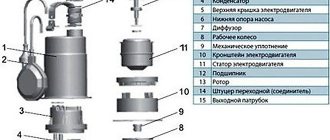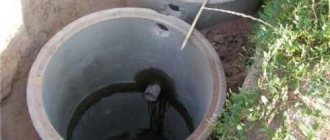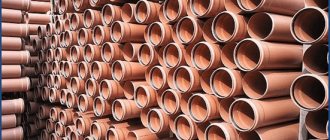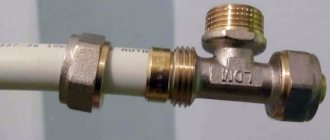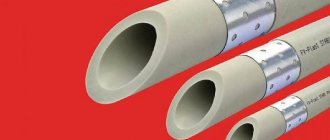Perhaps the most annoying and troublesome breakdown that can occur in your home is a sewerage malfunction. Repair of sewer pipes may be needed for many reasons and at any time (even the most inopportune for you). After all, a modern sewer system is a serious technical complex that serves the entire house and combines a bathtub, toilet, all sinks and other washing machines, including a dishwasher and washing machine. Moreover, internally, all these elements are connected into one network, with many connections and interconnections, which, of course, is not immune to breakdowns.
Thus, if there is a sewerage problem, the entire house may be deprived of its usual amenities for several days. Of course, it is best to entrust the solution to this problem to a special technician who will quickly and efficiently fix the problem.
What can you say about a sewer malfunction:
- Pipes or plumbing may leak
- The plumbing becomes clogged, or the water begins to flow poorly
- Crack in the pipe
- Unpleasant smell
In any of the above cases, immediately after detecting damage (or signs thereof), you need to block or secure the breakdown and call a technician. Further repair of the sewer pipeline will depend on the extent and location of the breakdown.
When is sewer repair necessary?
Sewerage is a system of pipelines connected to plumbing and household appliances. The purpose of this design is to drain wastewater from the premises. If the system is mishandled or worn out, malfunctions occur and repairs are required.
Common problems and reasons for their occurrence
Most often, residents are faced with the problem of clogged drains. There are 2 reasons why this happens:
- When installing the pipeline, the builders violated the technology, which led to the formation of stagnant areas. In a private house, due to improper design of the system, the system freezes and an ice plug interferes with the outflow of water.
- During operation, the sewage system was used incorrectly and preventative cleaning was not carried out. Animal fat, hair, and food waste enter the system and form impenetrable plugs at the turning points of the pipes.
Another problem is the natural wear and tear of the pipeline. Constant loads lead to leaks, cracks, and the formation of fistulas, and this cannot be done without repairs.
Causes of breakdowns
Why do sewer problems occur? Let's figure it out:
- If the system lasts a very long time, most likely the equipment has simply worn out and needs to be replaced;
- Some owners misuse it, throw insoluble, large objects, which causes blockages;
- Problems can also arise due to mechanical damage that causes malfunctions; in such cases, urgent sewer repair is required;
- Sometimes developers make design mistakes by not taking into account some important parameters when drawing up the plan; or unprofessional installation work was previously carried out, low-quality materials were used.
If the water drains slowly, an unpleasant odor or leaks appear, call a specialist immediately.
What is required for repair
The set of tools and consumables depends on the type of problem and the material from which the sewer pipeline is made. I recommend having everything you need because you never know what kind of emergency will happen.
Tools:
- hammer;
- chisel;
- Bulgarian;
- Screwdriver Set;
- pipe cutter;
- drill;
- cable with a brush.
Consumables:
- clamps;
- couplings;
- sealant;
- cement;
- rubber compressor;
- chemical solvents.
If you need to replace part of the pipeline or riser during repairs, you will additionally need a pipe made of cast iron or PVC.
Basic methods of do-it-yourself sewer repair
Common problems with the water drainage system in an apartment are blockages and leaks. Depending on the material from which the sewer system is made, a method for troubleshooting is selected.
Blockage
There are 4 ways to deal with blockages. I had the opportunity to use all 4 in practice, each copes with the task in its own way. The main thing is to correctly correlate the cleaning method and the scale of the blockage.
If your toilet or sink is draining slowly, it is wise to use the following methods. Perhaps repairs can be avoided:
- Everyone has a rubber plunger in their apartment. If used correctly, it will clear the clog quickly. Press the rubber tip firmly against the drain hole. There should be water in the sink or toilet at this moment. Perform 15–20 sharp pressures from bottom to top, making sure that the tip is firmly held on the earthenware. Then forcefully remove the plunger. The waste will rise to the surface.
- Cool boiling water will help remove fat deposits. Pour boiling water into the drain, wait 20 minutes and drain the water.
If the water does not go away, but rises up with the waste, use one of the following options:
- An effective method is chemicals to remove blockages. I used the drug "Mole", and I am pleased with the result. Other advertised products, such as "Mr. Muscle" or "Tiret", are also effective. You can pour a mixture of salt and soda into the hole, pour a glass of 70% vinegar essence, then rinse with water 2-3 times. This method will help with minor blockages. Caustic soda removes deposits on pipe walls, but this substance cannot be used for a cast iron system.
- Purchase a cable with an end from a home hardware store. The principle of operation is to twist the cable in the sewer pipe. At the same time, the brush at the end cleans the walls of plaque. While scrolling, you need to drain the water from the tank several times.
The cause of a clogged sink is the accumulation of debris in the siphon. This cannot even be called a repair: you need to unscrew the lower part of the siphon and the drain pipe, remove waste, rinse and put everything back together.
Leak
An unpleasant smell in the apartment is the first sign of a sewer leak. First you need to understand which area is leaking and promptly begin repairs. The main places are connections and joints. Leakage in these areas occurs from improper operation, installation errors and as a result of expiration of service life.
When an old cast iron pipe leaks, the entire sewer system or just the damaged area is replaced. If such repairs are beyond your means, there are other ways to fix the leak:
- process joints;
- repair a fistula or crack;
- remove the blockage.
If the leak has formed in a place hidden by the floor slab, you will not be able to repair such a defect yourself.
Leaking pipes at joints
Before starting repairs, you need to warn your neighbors and ask them not to use the sewer temporarily. Clean the leak area and dry with a hairdryer. Coat with cement mortar with the addition of PVA construction adhesive. The coating dries within 24 hours. During this time, secure the leak site with a repair coupling.
Crack in cast iron and plastic pipe
For pipes made of cast iron and steel, the following methods for eliminating leaks are suitable:
- Treatment with epoxy resin or construction water-repellent adhesive.
- Wrapping with a rubber gasket and fastening with clamps.
- A bandage made of absorbent material and further impregnated with epoxy resin.
For PVC pipes use:
- cold welding;
- self-adhesive tape;
- rubber or silicone sealant.
Replacing old fittings with new ones will help completely eliminate the leak.
Clogged sewer system
If sewerage is installed incorrectly in private homes, water supply pipes freeze. If a blockage has formed at this time, then under the influence of cold the blockage expands and puts pressure on the walls of the pipeline. As a result, cracks appear on the surface. The same situation is typical for apartments in Khrushchev-era buildings. For small defects, it is enough to coat the cracks with sealant.
Repairing cracks in sewer pipes
Every day the sewer riser experiences loads and pressure. The comfort of residents on all floors depends on the serviceability of this pipe in the apartment. If the riser was installed many years ago, repairs in case of severe deformation will help little; it is better to replace the damaged area completely.
For temporary fixation it will help:
- wrapping with plumbing flax;
- coating with a mixture of orthophosphoric acid and copper oxide in a ratio of 2:3;
- sealing with a solution of powdered ammonia, iron filings and sulfur.
Plumbing stores have a large selection of rubberized clamps with a metal frame and various diameters. Installing this will permanently eliminate a crack in a riser made of steel, cast iron or PVC.
Prevention of good work
In order for the sewer system to work properly and serve as long as possible, several rules should be followed:
- Regularly inspect pipes through inspection wells
- Periodically clean pipes using chemicals or hydrodynamic methods
- Do not allow large overloads on the pipeline (driving heavy special equipment through the pipeline, working with drills and fenders, etc.).
- When installing, use high-quality products
- Carefully monitor the tightness of connections during installation.
How to replace a sewer pipe in an apartment
When completely worn out, the damaged area must be replaced. The services of a road repair specialist, but you can install a new section yourself. If the damaged area is located under a tile or decorative panel, then opening it is necessary. Consider this as an additional cost when repairing the pipeline.
Stages of dismantling an old pipe
Before starting repairs, you need to dismantle the old pipe, turn off the water and disconnect the plumbing fixtures from the sewer. Then do the following:
- If necessary, break the cement screed and free the pipe.
- Disconnect fittings.
- Using a grinder or pipe cutter, cut off the pipe, moving 5–10 cm away from the installation site.
- Remove the sawn part with a hammer and crowbar.
- Fill potholes and uneven areas with cement mortar.
When dismantling, the main rule is not to rush, otherwise there is a risk of damaging entire parts.
Stages of assembling a new pipeline
When replacing an old cast iron sewer system with PVC, first assemble the fittings and pipes into one system. Then marks are made on the walls, taking into account the slight slope towards the riser. Clamps are attached to the marks. After this, the installation of a new pipeline begins:
- Connect the assembled system to the sewerage inlet using a sealing collar. Make sure that no burrs appear in the cutting areas, otherwise this will cause permanent blockages.
- To connect to the plumbing equipment, the pipeline is extended to the required length.
- The tightness at the joints is checked.
Now you can use the new sewage system.
Features of repair of external sewerage
The difference between the sewer system of a house in the private sector is that it runs underground. If you need to replace part of the pipeline, you can do without dismantling. To do this, a new one of smaller diameter is laid over the old system.
During a major sewer repair, a pipeline with a defect is dug out, and a new system is laid in its place on a slope. Depending on the region of residence, choose a method of protection against freezing:
- laying to a sufficient depth;
- insulation of pipes with insulating materials.
When it is not possible to remove a leaking pipeline, the method of pressing into the ground is used. A new sewer is laid in the vacant space on top of the old sewer.
Approximate prices
The cost of plumbing work differs in different regions, so we will present a table with average prices for the market.
| Service | Price, rub.) |
| Television inspection of sewerage (with recording on CD) | 2 500-10 000 |
| Sewer cleaning | 500 per m/p |
| Hole for pipe in the wall | 800 |
| Pipeline layout | 1000 for 1 point |
| Grooving a concrete wall for pipes | 1000 per m/p |
| Attaching pipes to the wall | 100 |
| Sewage device | 20 000 |
| Inserting pipes into an existing network | 400-500 |
| Replacing risers | 4 000 |
| Replacement of pipelines | 1000-1200 |
| Pipeline welding | 250 per joint |
| Dismantling of sewer pipe (PVC, cast iron) | 300 per m/p |
| Replacing connecting elements | from 1000 |
| Replacing the fitting (fixing leaks) | 500 |
| Installation of HDPE pipe | 50-100 |
| Removing blockages | from 1000 |
| Waterproofing joints | 150-200 |
| Insulation of pipes with soft thermal insulation | 50 per m/p |
Basic mistakes when repairing a sewer system
It is possible to identify the cause of a sewer malfunction and repair it only with an understanding of how the system works. You cannot begin repairs without determining the material from which the pipeline is made. Otherwise, there is a risk of flooding your neighbors and creating an emergency that will affect the entire house. Work should be carried out in strict accordance with the technological process, observing the sequence of actions.
When choosing a material for a new sewer system, many try to save money, while the service life depends on it. You need to buy all components for repairs in trusted stores. Quality certificates must be provided for products.
Our best masters
32
work for the last month
16 years
years of experience
Semenov Andrey Valentinovich
| Age: | 51 |
| Specialization: | Generalist |
| In company: | from March 25, 2021 |
| About the master: The master has a large number of completed orders behind him. Responsible. Works quickly and efficiently. | |
28
work for the last month
26 years
years of experience
Brezhnev Sergei Semenovich
| Age: | 50 |
| Specialization: | Electrician, carpenter |
| In company: | from December 13, 2021 |
| About the master: Qualified master. Specializes in electrical installation and carpentry work. Responsible, serious and fulfills orders conscientiously. | |
36
work for the last month
27 years
years of experience
Ozerny Vladimir Viktorovich
| Age: | 56 |
| Specialization: | Electrician, carpenter |
| In company: | from October 29, 2021 |
| About the master: Sociable and responsible master. Can cope with a task of any complexity. Takes a responsible approach to fulfilling orders. | |
All masters
